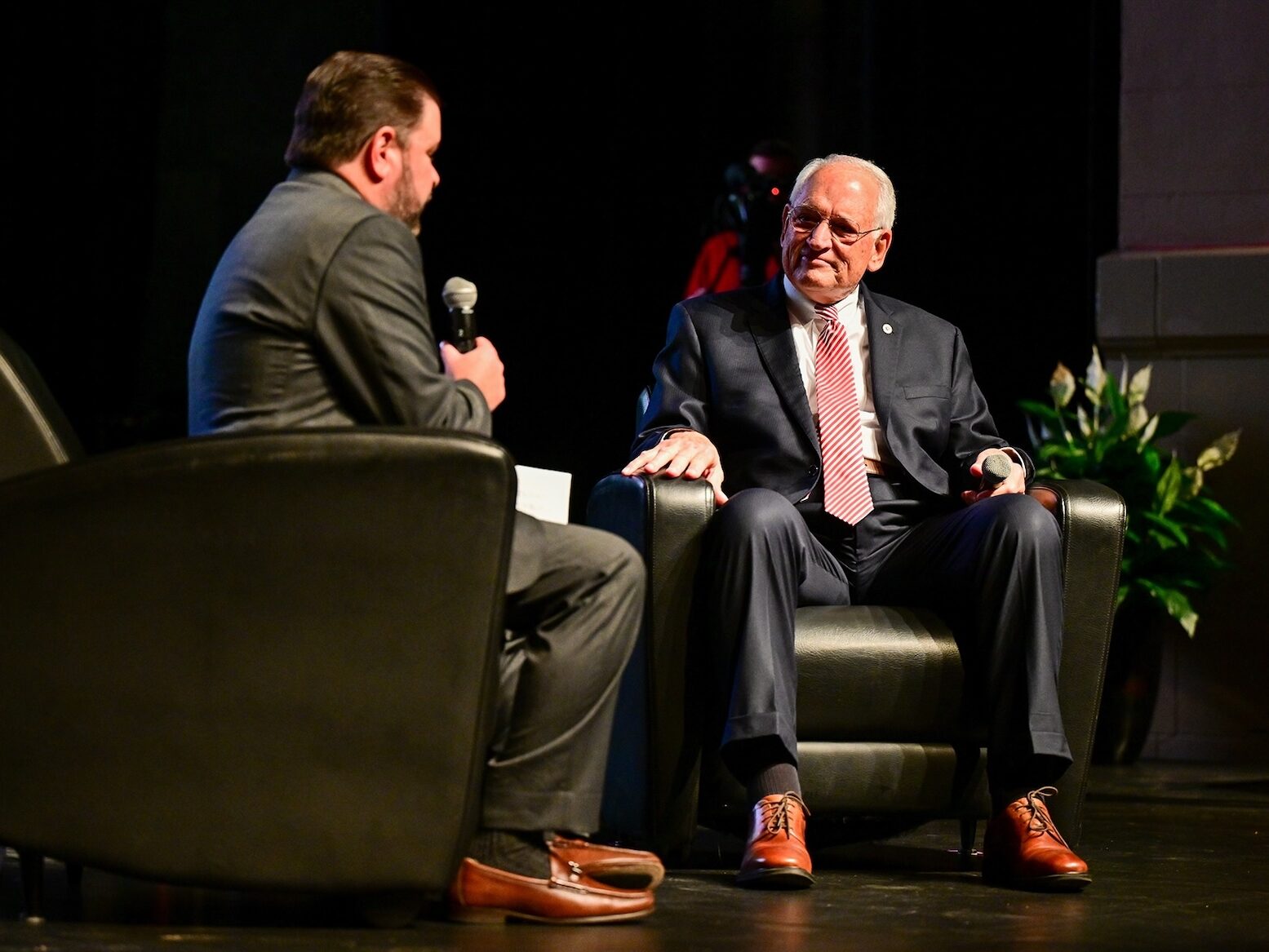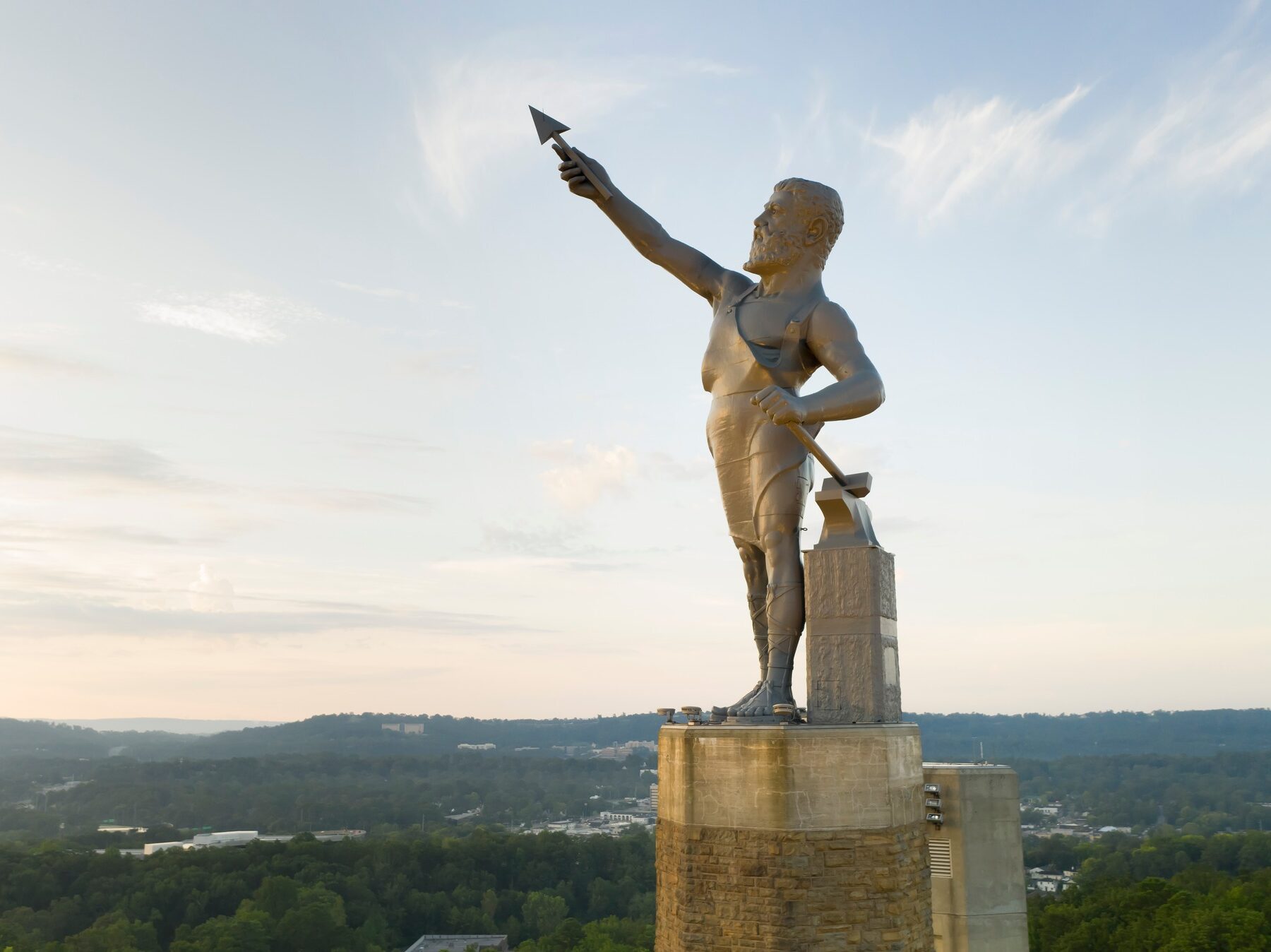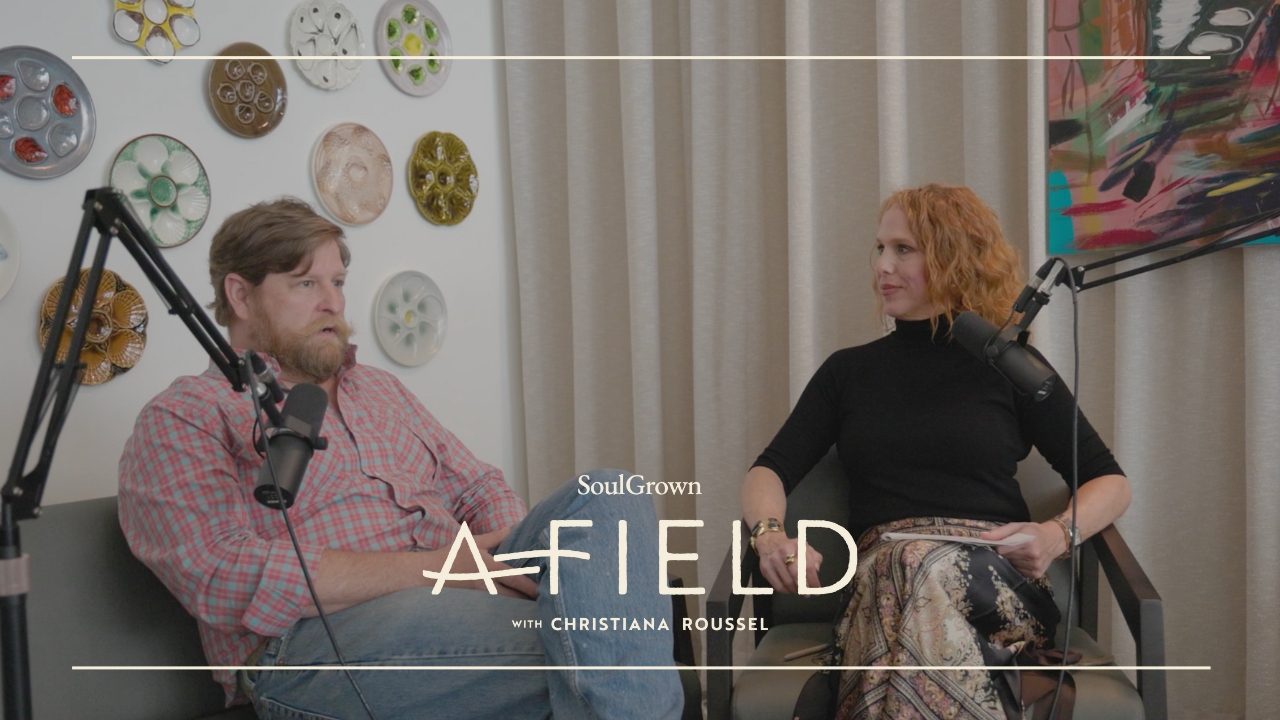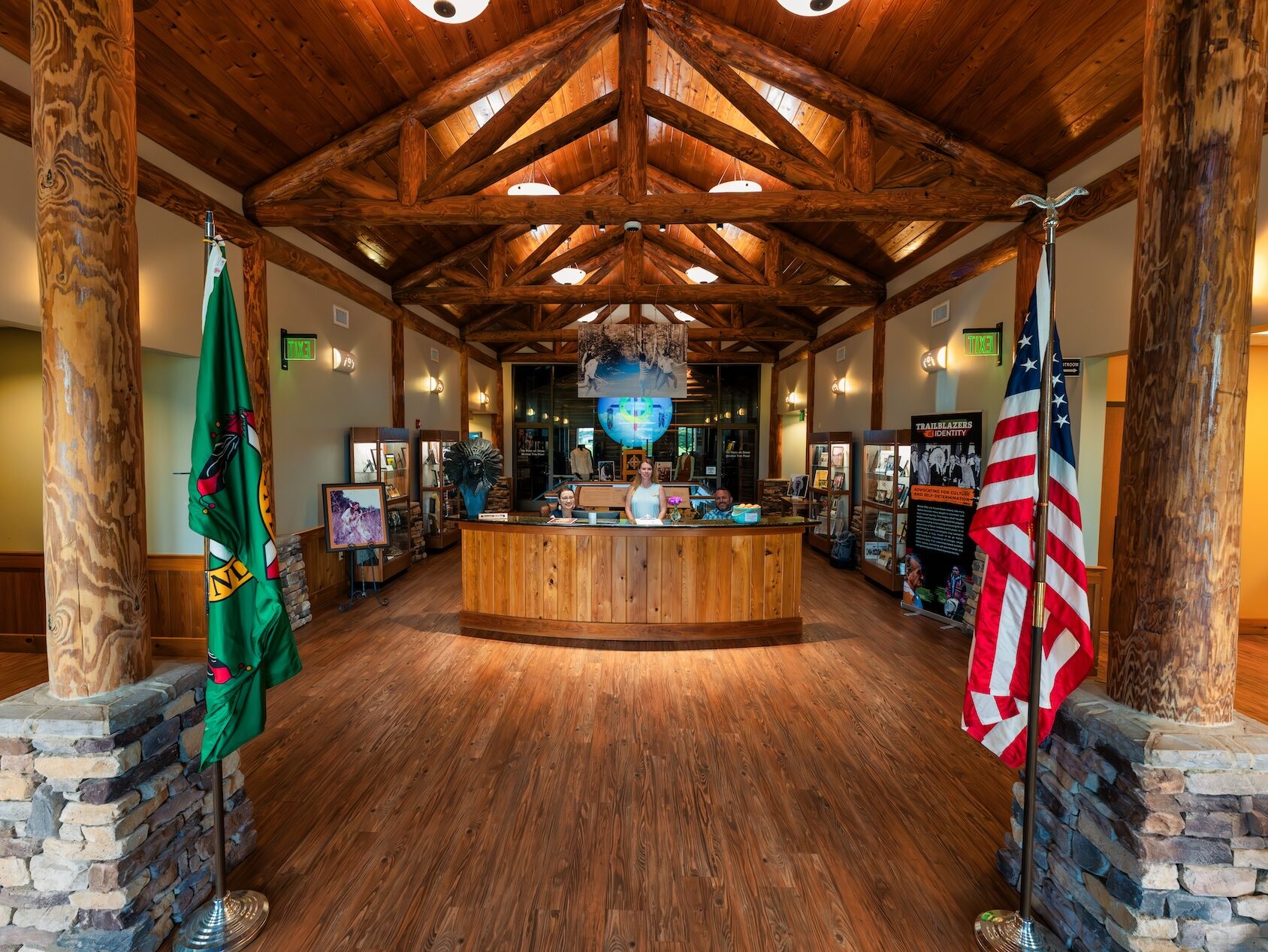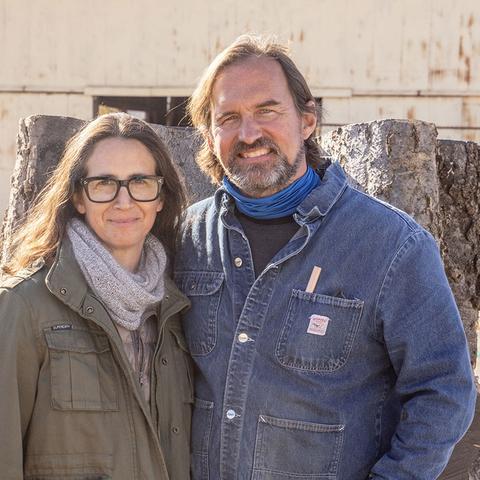
Leigh & Cliff Spencer/alasaw.com
Alabama has the second largest urban forest in the country. Cliff and Leigh Spencer are working to make good use of it. The couple behind woodworking company Alabama Sawyer moved to Birmingham in 2016 to turn their dream of a field-to-studio furniture company into reality. In the past five years, they’ve repurposed thousands of downed trees to create gorgeous handmade pieces of all sizes, from cutting boards to custom conference tables. In 2017, Garden & Gun named them the winner of their annual Made in the South awards. We sat down with Leigh to learn more about the origins and inspiration behind Alabama Sawyer.
How did Alabama Sawyer come to be?
Alabama Sawyer started when Cliff came to Birmingham for Design Week BHM in 2014. He presented to the creative community but specifically to the architects and interior designers, encouraging them to integrate urban wood into their designs. We had been milling and integrating urban wood in Los Angeles for about 10 years, but the urban forest in Alabama is one of the largest.
After the presentation, several attendees connected him with like-minded people in the city. They recruited him to start working on the project remotely over about a year and half. Eventually, it was clear that to really make it happen, Cliff had to move to Birmingham (his hometown). We were at a good moment in our life to make a change. Both kids were at the time to start new schools. I loved visiting Birmingham over the years, so we did it.
How does the idea of locality and using the resources around you play into your business model and mission?
It drives our creativity! We are always looking to find more local materials and resources, attract and train local talent, and share a local business story and the story of the area around it.
How has your business changed in the last year through the pandemic? Have you had to endure any major setbacks, or have you seen any unexpected silver linings?
It was a slow start, and of course no one knew how long it was going to last. We still don’t know. There is no 20/20 2020 hindsight yet. At first, with all the uncertainty, we lost some large contract jobs that were in the works. That was a brutal setback. Still, we had enough going on that we used the downtime to move to a new location that gave us some space to work safely and in time, to grow. On the fly, we designed and built a work from home desk—initially for our kids. There was interest, so we made it a product and added a giving component. That drove a fair amount of sales (and thus donations), and the product ended up in Dwell magazine at the end of the year. There was enough silver lining to make me optimistic that we can keep adapting.
What are your thoughts on the maker community in our state? How do you fit into that community?
I love the maker community in Alabama. Landing at MakeBHM in 2016 made moving to a new state a lot easier for me, an outsider. I’d say we don’t fit exactly into that business model, but we have similar motivations to keep craft and handmade skills thriving in the state and in the U.S.
Are there any favorite projects or designs you’ve worked on through the years?
I was really proud to work on furniture for the new Equal Justice Initiative. We worked with Williams Blackstock Architects. They integrated some of our signature designs, like the legacy base table, as well as some other pieces. There was a rush to get it done by the Martin Luther King Jr. holiday. It was exciting to make the tight deadline. COVID has limited the amount of people who can visit the Museum, but I hope everyone makes the trip, again, to the new location.
Where do you find inspiration for your work?
I can only speak for myself. In terms of function, there is always an element of need. School was cancelled and we needed a desk. I talk to my customers, interior designers, and e-commerce partners. I ask them what they need. For aesthetics, I look at the wood, the grain, the board profile. We have stacks and stacks of local urban wood. We work in a 100-year-old building that used to be a car manufacturing plant. It has a lot of history, like this city and Alabama. That is inspiring. I look at art and graphics and interiors. I am always building a mental library of inspiration.
What are your plans for the future of Alabama Sawyer?
We have plans to grow! And we are hiring. Know any great woodworkers?

Cary Norton/Contributed
(Q&A edited for length and clarity)

